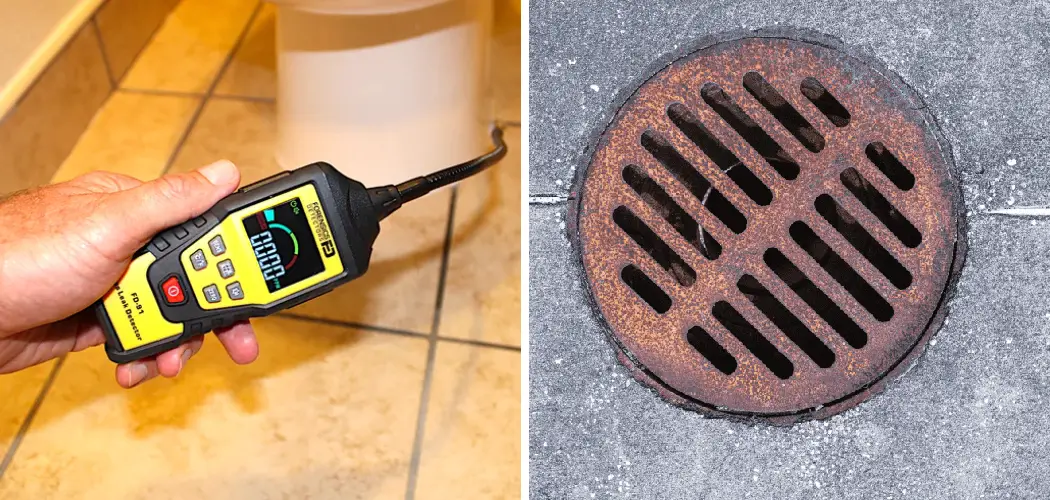Sewer gas is no laughing matter. It’s a dangerous mixture of gases that can cause nausea, dizziness, and even death in high concentrations. That’s why it’s critical to test your home for sewer gas and take any necessary precautions to prevent it from entering your indoor air supply.
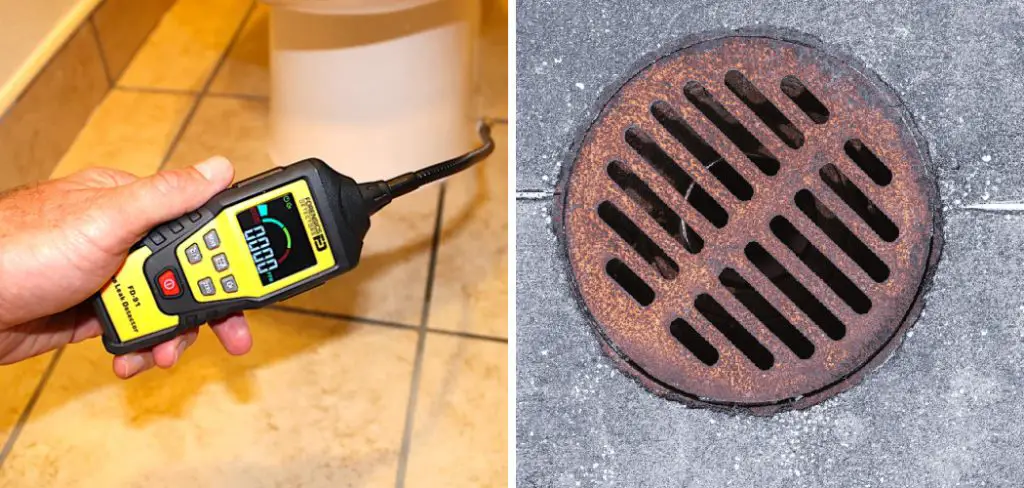
In this guide on how to test for sewer gas in home, we’ll walk you through the various steps you can take to test for sewer gas in your home and keep your family safe.
Needed Tools and Materials
Given below are the tools and materials you’ll need to test for sewer gas in your home:
- Odor Detector
- Gas Mask
- Multi-meter or Other Electrical Testing Device
- Gloves and Safety Glasses
- Gas Detector (if Available)
Step-by-step Guidelines on How to Test for Sewer Gas in Home
Step 1: Locate Potential Sources of Sewer Gas
Common sources include floor drains, toilets, and sinks. Inspect the areas surrounding these fixtures for any signs of leakage, such as dampness or mold growth. It’s also important to check for any cracks or gaps in the walls and floors that could be allowing sewer gas into your home.
It’s especially important to check for cracks in the foundation, as these can provide pathways for sewer gas to enter your home. But, even if you can’t find any visible signs of sewage leakage or cracks, it doesn’t necessarily mean that your home is free of sewer gas.
Step 2: Inspect Exterior Plumbing Vent Pipes
Look for any corroded sections, loose connections, or clogged vents that can prevent proper ventilation of sewer gases from the plumbing system. It’s important to make sure that all vent pipes are properly maintained to prevent sewer gas from entering the home. It’s also important to make sure that the vent pipes don’t have any blockages, such as leaves or debris.
Step 3: Check Your Home’s Drain Traps
Drain traps are designed to trap and store water, which prevents sewer gases from entering your indoor air supply. It’s a good idea to check your traps periodically for any leaks or blockages that could be allowing sewer gas to enter your home.
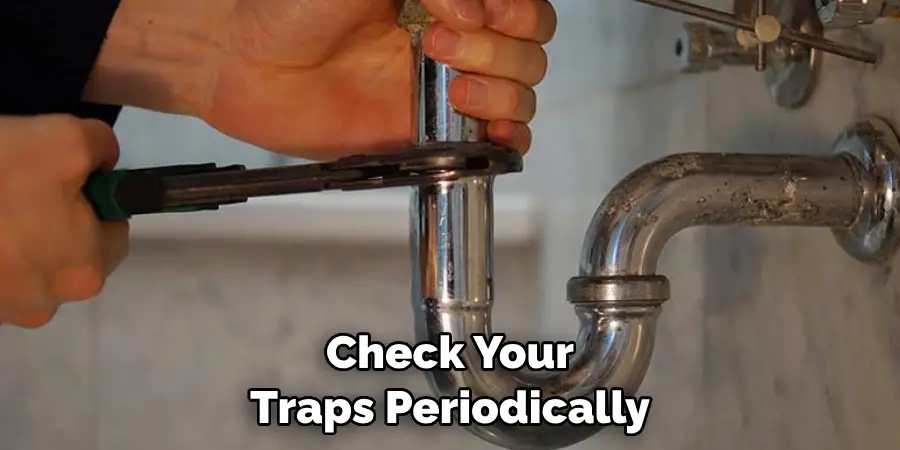
It’s also important to make sure that the traps are not completely dry, as this can create a pathway for sewer gases to enter your home. But be careful not to overfill the traps, as this can cause them to overflow.
Step 4: Test for Sewer Gas with a Detection Device
You can purchase specialized sewer gas detection devices at most hardware stores. These devices will measure the levels of hydrogen sulfide in the air and alert you to any dangerous concentrations. This is a great way to test for any hidden sources of sewer gas in your home. It’s important to follow the manufacturer’s instructions carefully when using these devices.
Step 5: Use an Odor Detector
If you don’t have a gas detector, you can use your nose as an indicator of sewer gas. Sewer gases typically produce strong odors that range from sweet to putrid. If you notice unpleasant smells coming from drains or other plumbing fixtures, this may indicate the presence of sewer gas in your home. This is a good indication that you need to take action in order to prevent any further issues.
Step 6: Make sure the Ventilation is Properly Working
Proper ventilation is essential for dispersing sewer gases from the home. Check to make sure that all exhaust fans, such as those in the kitchen and bathrooms, are properly vented to the outside.
If possible, open windows or use additional fans to improve air circulation. You should also make sure that the vents for your heating and air conditioning systems are not blocked or obstructed in any way.
Step 7: Repair any Leaks or Blockages
If you notice any leaks or blockages in your piping or ventilation system, it’s important to have them fixed as soon as possible to prevent sewer gas from entering the home. Shut off the water supply to any leaking fixtures, and contact a professional plumber if necessary.
If you’ve noticed any blockages in your ventilation system, you can try to remove them yourself with a vacuum cleaner or other appropriate tool. However, if the problem persists, it’s best to contact a professional.
Step 8: Clean and Disinfect Drains Regularly
It’s a good idea to clean and disinfect drains regularly with natural cleaning products. This will help keep your plumbing system free of debris that can cause blockages and odors. It’s also important to make sure that you clean and disinfect areas where water collects, such as around the base of toilets.
This will help prevent the build-up of bacteria and mold which can lead to sewer gas in your home. It’s also a good idea to routinely pour hot water down the drains in your sinks and showers, as this can help prevent blockages.
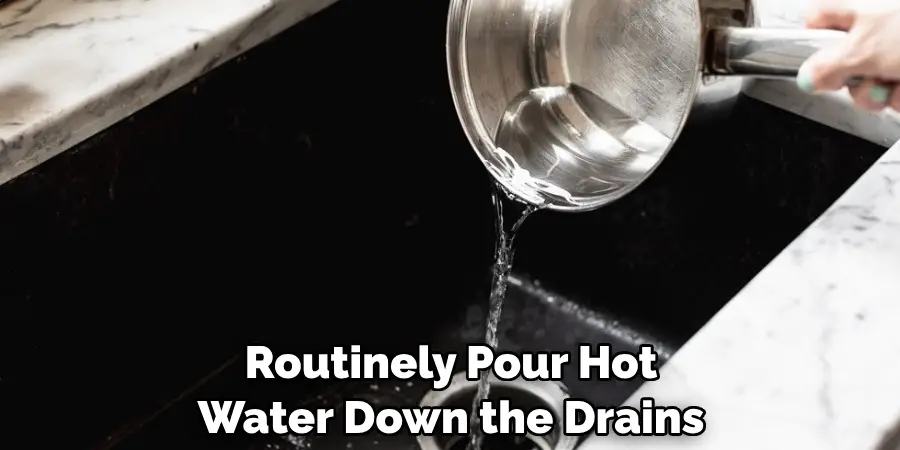
Step 9: Invest in a Sealed Septic Tank
If you have a septic tank, make sure that it is properly sealed so that sewer gases cannot escape and enter your home’s indoor air supply. It’s also a good idea to have your septic tank inspected and pumped out regularly to ensure that it is functioning properly.
This will help reduce the risk of sewer gas entering your home, as well as other potential health hazards. If you don’t have a septic tank, consider investing in one as an extra precaution.
Step 10: Install Carbon Monoxide Detectors
Carbon monoxide detectors are essential for detecting any dangerous levels of carbon monoxide that may be present in the home. Carbon monoxide is produced by certain types of sewer gas and can be deadly if it reaches high concentrations.
But, fortunately, carbon monoxide detectors can alert you to any dangerous levels of the gas. You should install at least one carbon monoxide detector in your home, and make sure to follow the manufacturer’s instructions for proper placement and maintenance.
Step 11: Contact a Professional Plumber
If all else fails, contact a professional plumber to inspect your plumbing system for any potential sources of sewer gas and complete any necessary repairs or replacements. A professional plumber will be able to identify any issues and provide you with a solution that will keep your family safe from the dangers of sewer gas.
It’s also a good idea to invest in regular maintenance and inspections of your home’s plumbing system, as this can help prevent any potential problems from arising. By taking these steps, you can keep your family safe from the dangers of sewer gas and enjoy a healthy home environment.
By following these steps on how to test for sewer gas in home, you can ensure that your home is free of sewer gases and protect your family from the potential hazards associated with them.
Keep in mind that it’s important to take action promptly if you suspect that sewer gas is present in your home, as it can be dangerous if left unchecked. Taking the time to test and prevent sewer gas can help keep you and your family safe.
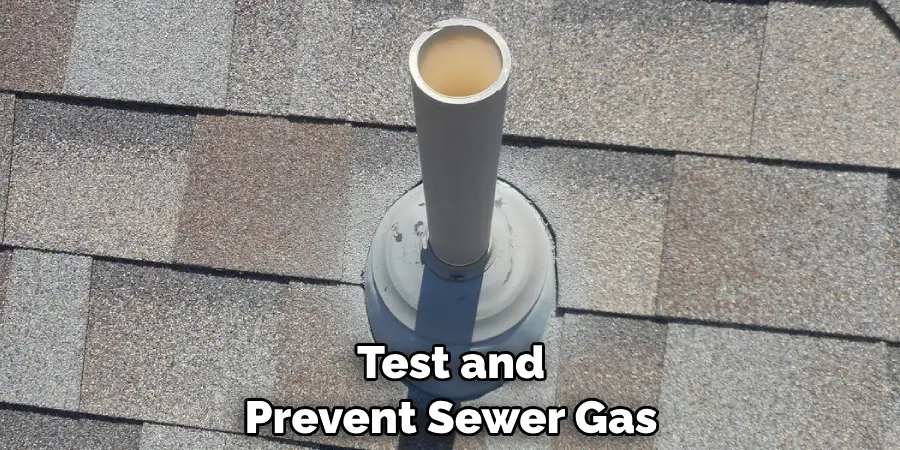
What Are Other Prevention Tips?
Aside from testing for and treating sewer gas, it’s also important to keep your plumbing system free of any debris or blockages. You should routinely clean out sinks and toilets, as well as inspect them for any signs of leaks or clogs.
Additionally, it’s a good idea to check and replace pipes in older homes regularly as they can become brittle and cause leaks over time. Finally, make sure to properly ventilate your home to allow the air to circulate and disperse any potential sewer gases. By following these simple tips, you can ensure that your home stays safe and free of unpleasant odors.
Frequently Asked Questions
Q1: How Often Should I Check for Sewer Gas in My Home?
A1: It’s a good idea to inspect your home for signs of sewage gas and inspect vent pipes, drain traps, and plumbing fixtures at least once a year. Additionally, you should test for sewer gases with a detection device if you notice any suspicious odors or signs of leakage.
Q2: How Dangerous is Sewer Gas?
A2: Sewer gas can be dangerous in high concentrations, as it can cause nausea, dizziness, and even death. That’s why it’s important to test for sewer gas in your home and take any necessary precautions to prevent it from entering the indoor air supply.
Q3: Can Carbon Monoxide Detectors detect Sewer Gas?
A3: Yes, some types of sewer gas produce carbon monoxide which can be detected by carbon monoxide detectors. It’s important to make sure that your home is equipped with working carbon monoxide detectors to alert you to any dangerous levels of this gas.
Q4: How Can I Tell if My Home Has a Blockage or Leak?
A4: You can inspect the areas around toilets, sinks, and floor drains for any signs of leakage, such as dampness or mold growth. Additionally, inspecting any exterior plumbing vents for corroded sections, loose connections, or clogged vents can help determine if there is a blockage or leak in the plumbing system.
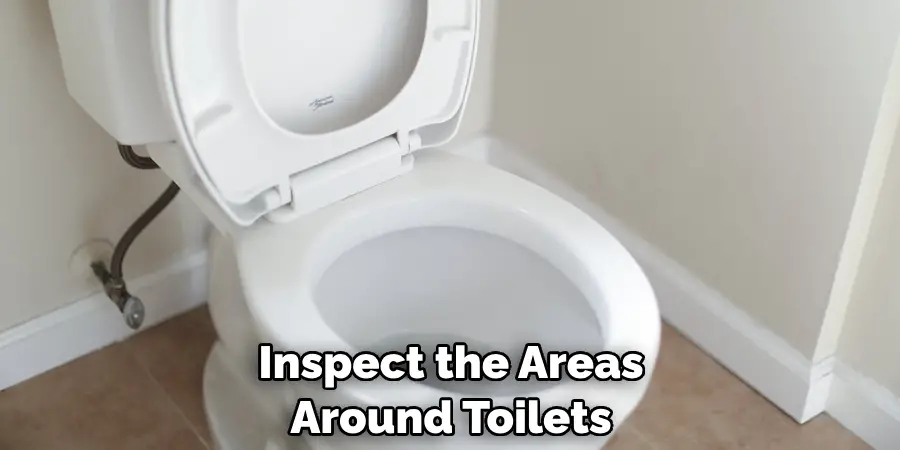
Conclusion
Whether you rent or own, it is important to know and test for sewer gas in your home. Take a proactive step today and determine how to keep your indoor space safe from potentially hazardous sewer gas. If you are concerned that your home might have elevated levels of sewer gas, seek professional help to properly evaluate and address the issue.
Test for sewer gas regularly using an unopened bottle of hydrogen sulfide detector solution or check for telltale signs such as strong odors near pipes, drains, or rest rooms and act quickly if you detect any dangerous levels of this toxic gas.
With regular testing and maintenance of the plumbing system in your home, you can significantly reduce the danger from sewer gases as well as damage to property that may result from this hazardous material. Be proactive and take control of the safety of your environment by testing regularly – not just for the sake of yourself, but for peace of mind knowing how to test for sewer gas in home!

